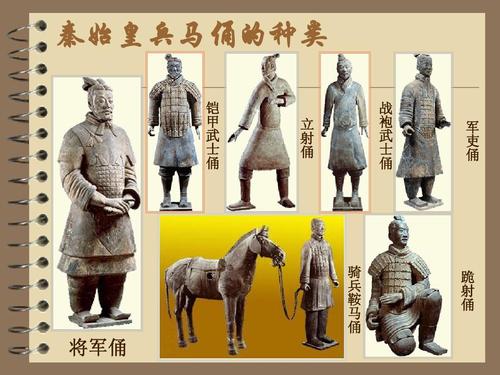
The Terracotta Army: An Army of Thousands
A Wonder of the Ancient World
Referred to as the eighth Wonder of the World, the original Terracotta Warriors date back to 209 B.C. and were found in 1974 by a worker digging a well. It is believed as many as 8,000 warriors exist, nestled in the grave among chariots, animals, entertainers and other clay representations of afterlife needs.
The Purpose of the Terracotta Army
The Terracotta Army's purpose was to protect the tomb of Qin Shi Huang, the first emperor of a unified China. The army was meant to serve as his guardians in the afterlife, ensuring his continued rule and protection from enemies. The figures are life-sized and were originally painted in bright colors, which have faded over time.
The Different Types of Warriors
The Terracotta Army is not just a mass of identical soldiers. Archeologists have identified different types of warriors within the ranks, each with unique characteristics and roles:
- Infantry: Standing with great determination, these warriors were the foot soldiers of the army, equipped with swords, spears, and crossbows.
- Archers: Kneeling in ready positions, these warriors were responsible for long-range attacks.
- Charioteers: Responsible for driving and defending the war chariots, these figures often wore armor that distinguished them from other warrior types.
- ** Generals and Commanders:** Larger in size and adorned with elaborate headdresses and armor, these figures represent the leaders of the Terracotta Army.
The variety and detail in these figures reflect the strict military hierarchy of Qin Shi Huang's era.
Beyond the Warriors: Other Figures in the Terracotta Army
While the warriors are the most famous figures in the Terracotta Army, they are not alone. Excavations have unearthed other figures, including:
- Horses: Hundreds of terracotta horses, equally detailed and lifelike, were buried alongside the warriors, some pulling bronze chariots.
- Acrobats and Entertainers: These figures suggest that the afterlife of the emperor was meant to be filled with entertainment and leisure.
- Officials and Civil Servants: These figures highlight the importance of administration and governance, even in the afterlife.
The Mystery of the Unopened Tomb
Adding to the intrigue of the Terracotta Army is the fact that the tomb of Qin Shi Huang himself remains unopened. Archaeologists and historians are cautious about disturbing the tomb, as concerns about potential damage from exposure to the air and other factors remain a concern. The unopened tomb continues to fuel speculation about what treasures and secrets it may hold.
FAQs
1. How many Terracotta Warriors have been excavated?
To date, approximately 2,000 Terracotta Warriors have been excavated and assembled, representing a fraction of the estimated total.
2. Are all of the Terracotta Warriors identical?
No, each Terracotta Warrior is unique, with variations in facial features, hairstyles, clothing, and poses, reflecting the diversity of the actual army.
3. Where is the Terracotta Army located?
The Terracotta Army is located in Lintong District, Xi'an, Shaanxi province, China. It is a UNESCO World Heritage site and one of China's most popular tourist destinations.